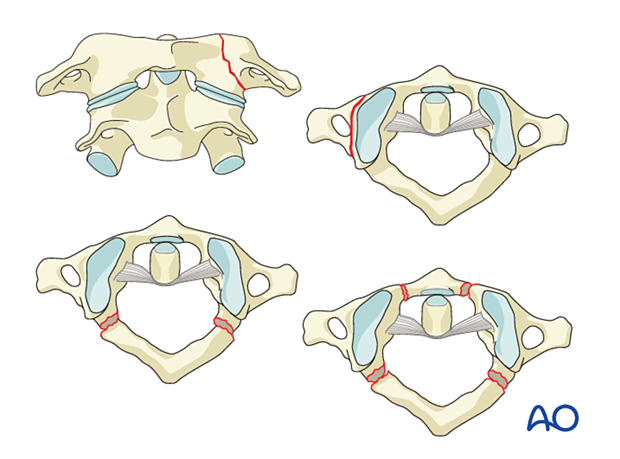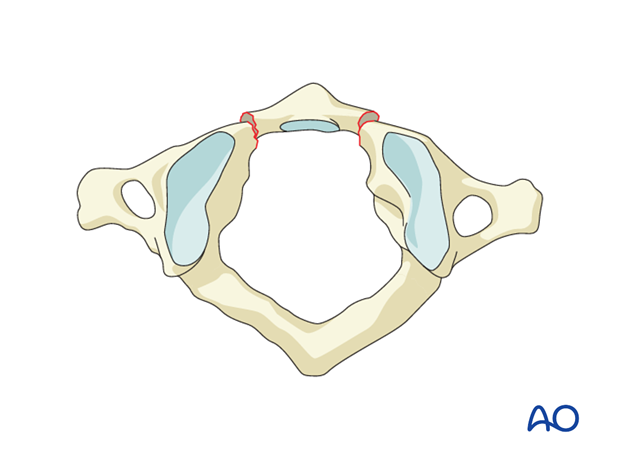Region II: C1 ring and C1–C2 joint - Type A: Isolated bony injury
Type A injuries are any C1 fracture (simple or multifragmentary) without significant ligamentous injury.
These may be fractures of the:
- Anterior arch
- Posterior arch
- Anterior and posterior arch
- Lateral mass
- Transverse process

Anterior arch injury
Anterior arch injuries are in general hyperflexion injuries. These are normally stable and treated with no immobilization or use of a collar for pain management.

Posterior arch injury
Posterior arch injuries are hyperextension injuries. These are normally stable and treated with no immobilization or use of a collar for pain management.

Combined posterior and anterior arch injury
Burst fractures are axial load injuries resulting in both anterior and posterior ring fractures. The fractures can be uni- or bilateral.
Nondisplaced burst fractures are normally treated nonoperatively without immobilization or use of a collar for pain management.

Transverse process injuries
Transverse process fractures are stable fractures and are treated nonoperatively with observation.
If the fracture involves the vertebral foramen, check for arterial injury.

Lateral mass fractures
Unilateral lateral mass fractures may collapse and cause deformity or result in posttraumatic arthrosis. Therefore, primary fixation can be considered.














